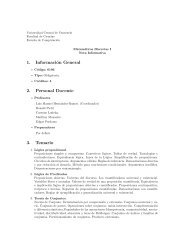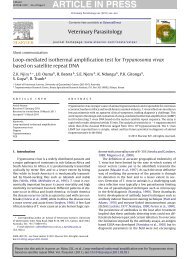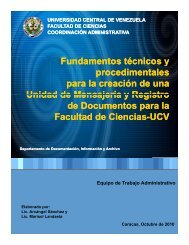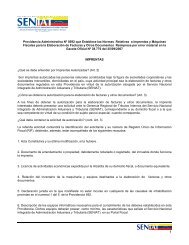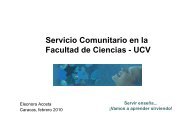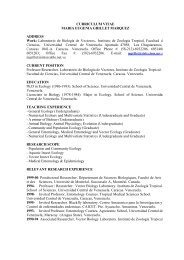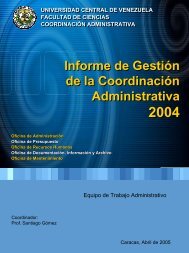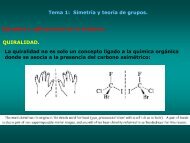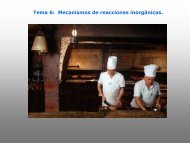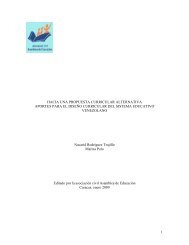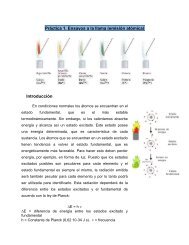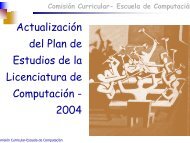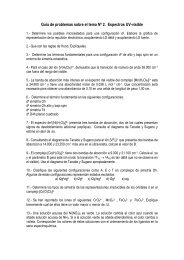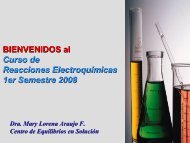Collecting and Preserving
Collecting and Preserving
Collecting and Preserving
- No tags were found...
Create successful ePaper yourself
Turn your PDF publications into a flip-book with our unique Google optimized e-Paper software.
First of all, make certain that any slide shipped isthoroughly dried <strong>and</strong> cured. Many slides may appear to becured when in fact the center is still liquid. Coverslips onslides which are not cured may move during shipment <strong>and</strong>damage or destroy the specimens. Slides may be shippedin holders made expressly for that purpose <strong>and</strong> availablecommercially from biological supply houses (fig. 35).Even in these holders it is advisable to wrap a little softtissue around each end of each slide so that the cover glassdoes not come into contact with anything. The slides mayalso be shipped in st<strong>and</strong>ard storage boxes with enough softtissue around each end of each slide <strong>and</strong> between the slides<strong>and</strong> the box lid to prevent movement. The box should thenbe wrapped to hold the lid down firmly. It may then betreated as described here for pinned <strong>and</strong> liquidpreservedspecimens. The wrapped slide container may also be tiedtogether with units of pinned or liquidpreserved specimensor both <strong>and</strong> placed in a carton with them. If no slideholders are available, a few slides, each wrapped withtissue, may be tied together at each end with tape,rubberb<strong>and</strong>s, or string, wrapped in strong paper, <strong>and</strong>placed in a mailing tube or carton with packing material.7.6 - Shipping Live Specimens.Most insects <strong>and</strong> mites intended for a collection orsubmitted to experts for identification should not beshipped alive. To protect American agriculture, Federallaw prohibits the importation <strong>and</strong> movement of live pests,pathogens, vectors, <strong>and</strong> articles that might harbor theseorganisms unless the shipments are authorized by the U.S.Department of Agriculture. If it is necessary to ship livematerial, be sure to comply with all Federal, State, <strong>and</strong>local regulations. Shipments of live insect material withoutvalid permits may be seized <strong>and</strong> destroyed by plantquarantine inspectors. In addition to meeting Federal laws,the shipment of some species must be approved by Stateofficials. For most questions regarding most federalregulations, contact the Animal <strong>and</strong> Plant Health InspectionsService (APHIS) within the U.S. Department ofAgriculture.<strong>Collecting</strong> <strong>and</strong> <strong>Preserving</strong> Insects <strong>and</strong> Mitesscale insects (Coccoidea) should be partially or completelydried before being placed in a container, or they should bepacked in a container such as a paper bag, which willpermit drying to continue after closure. Live Heteroptera<strong>and</strong> other small, active insects are killed easily by excessivemoisture in the container. Therefore, it is advisable toprovide several tiny vent holes or place a fine mesh screenover one end of the container when shipping such insects.Some containers designed to hold living insects arestrong enough to be shipped without additional packing,but generally the containers should be enclosed in a secondcarton with enough packing material to prevent damage tothe inner carton. In all cases, affix a permit for shippinglive insects in a conspicuous place on the outside of theshipping container.In recent months, regulations concerning theshipment of dead specimens has changed markedly. Thisis largely in response to concerns about trade in rare orendangered species <strong>and</strong> "wildlife". Previously, mostinsects were excluded from the category of "wildlife", butrecent rules have been exp<strong>and</strong>ed to include insects in thisdefinition. Within the U.S. it is still possible to ship deadinsect without special permits. However, shipment of deadinsects to foreign countries (or importation of specimensfrom foreign sources) may now require the filing of U.S.Fish <strong>and</strong> Wildlife Service Form 3-177. It is adviseable tocheck with Fish <strong>and</strong> Wildlife Service officials at thenearest port of entry (usually either a major airport or seaport) to find out what they require as there can be variationfrom port to port.It is recommended that all packages be marked"FRAGILE" <strong>and</strong> that a complete return address beincluded on the outside of each container. Valuablespecimens such as types should be sent registered mail.While this is more expensive than regular parcel post, itallows misdirected packages to be tracked much morereadily. It is also advisable to place a label such as "DeadInsects for Scientific Study. No Commercial Value" on theoutside of the package.Pupae or larvae shipped to be reared elsewhereshould be placed in tightly closed containers without ventholes. These insects require a minimum of air <strong>and</strong> will notsuffocate. Pupae preferably should be packed loosely inmoist (not wet) moss or similar material. Larvae should bepacked with enough food material to last until their arrival.Most beetle larvae <strong>and</strong> some caterpillars, especiallycutworms, should be isolated, since they are rathercannibalistic. To prevent excessive accumulation of frass(fecal material) <strong>and</strong> moisture, do not overload containers.Plant material held without ventilation tends to becomemoldy, especially when kept in plastic bags. For thisreason, pieces of the host plant bearing such insects asAcknowledgementsSeveral people have been very helpful in puttingtogether this revised version of the manual. I am particularlygrateful to Tami Carlow, Warren Steiner, RonHodges, John Brown, Alma Solis, Al Newton, ChrisThompson, <strong>and</strong> Dave Smith.52



